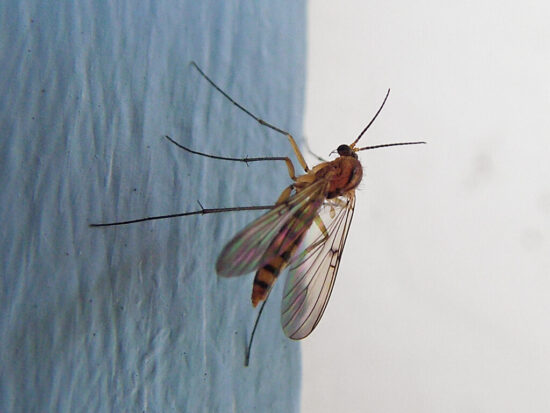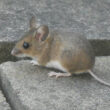If you’ve noticed tiny flying bugs hovering around your kitchen, bathroom, or houseplants, you’re dealing with gnats. These pesky little insects seem to appear out of nowhere and multiply like crazy. One day everything is fine, and the next day you’ve got what feels like a cloud of bugs following you around.
The good news? Once you understand why there are so many gnats in your house, it’s simple to deal with. Let’s look at the most common reasons why gnats show up in homes and what you can do about each one.
1. You Have Overripe or Rotting Fruit on Your Counter
The number one reason why so many gnats are in your house is sitting right there on your kitchen counter. Those bananas that are getting a little too brown? That’s basically a gnat magnet. Fruit flies (which are a type of gnat) absolutely love fermenting and rotting fruits and vegetables.
Here’s the crazy part: a single female fruit fly can lay up to 500 eggs at once. She’ll deposit them right inside or on overripe produce, and within a week to 10 days, you’ve got a whole new generation of gnats buzzing around. They’re particularly drawn to bananas, tomatoes, melons, and any fruit that’s past its prime.
The fix: Store your fruit in the refrigerator or in sealed containers. If something starts getting too ripe, either eat it right away or toss it in the trash outside. Don’t let fruit sit out on the counter for days, especially during warm weather.
2. Your Houseplants Are Overwatered
Another major reason why so many gnats are in your house is hiding in your potted plants. Fungus gnats love damp, moist soil more than almost anything. If you’re someone who waters plants a little too generously, you’re creating the perfect gnat nursery.
Female fungus gnats can lay between 200 and 300 eggs in wet potting soil. The eggs hatch into tiny larvae that live in the top inch or two of soil, feeding on fungi, decaying plant matter, and even plant roots. You might not even know you brought them home because many nurseries and garden centers have fungus gnat problems, and the eggs are already in the soil when you buy the plant.
The fix: Let the soil dry out completely between waterings. Stick your finger about two inches into the soil, and if it feels damp, wait another day or two. Make sure your pots have drainage holes, and don’t let water sit in the saucer underneath. Some people add a layer of sand on top of the soil to prevent gnats from laying eggs there in the first place.
3. Your Drains Are Dirty and Clogged
Take a look down your kitchen or bathroom sink drain. You probably can’t see much, but there’s a good chance there’s a buildup of gunk down there. Food particles, grease, hair, soap scum, and other organic matter create a slimy coating inside pipes. For drain flies (another type of gnat), this is basically a five-star hotel.
These gnats lay their eggs in the organic buildup inside drains, and the larvae feed on all that gross stuff you can’t see. A single drain can become home to hundreds of gnats if left unchecked. They’re particularly common in garbage disposals, bathroom sinks, and shower drains.
The fix: Clean your drains regularly. Pour boiling water down them at least once a week. You can also use a mixture of baking soda and vinegar (let it fizz for about 15 minutes, then rinse with boiling water). For tougher problems, enzymatic drain cleaners work well because they break down the organic matter without harsh chemicals.
4. Your Garbage Can Isn’t Properly Sealed
A common reason why so many gnats are in your house is that your trash can is like an all-you-can-eat buffet for them. Open garbage cans, overflowing trash, and bins that don’t close tightly give gnats easy access to rotting food, fermenting liquids, and all the smelly stuff they love.
Both fruit flies and drain flies are attracted to garbage. They can smell decomposing organic matter from pretty far away, and once they find your trash can, they’ll stick around and lay eggs. Even small amounts of food residue at the bottom of the bin can keep gnats coming back.
The fix: Invest in a trash can with a tight-fitting lid. Take out the garbage regularly (every day if you’re dealing with a gnat problem). Clean your trash can every few weeks with soap and water, and let it dry completely before putting a new bag in. Wipe down your counters after cooking so crumbs and spills don’t attract gnats in the first place.
5. You Have Open Windows, Doors, or Damaged Screens
Sometimes gnats aren’t breeding in your house at all. They’re just flying in from outside. Any opening to the outdoors is a potential entry point, and gnats are small enough to squeeze through surprisingly tiny gaps.
Even if you have screens on your windows, they might not be enough. Standard window screens have openings that are big enough for smaller gnats to slip through. Tears in screens, gaps around window frames, or doors left open for just a minute can let dozens of gnats inside. They’re especially attracted to lights at night, so they’ll head straight for your windows if you have indoor lights on after dark.
The fix: Make sure all your window and door screens are in good condition with no tears or holes. Check for gaps around window frames and door frames, and seal them with caulk or weatherstripping. If you’re in an area with really bad gnats, consider upgrading to screens with a finer mesh. And try to keep windows and doors closed as much as possible, especially at dusk when gnats are most active.
6. Your Home Has High Moisture or Humidity Levels
Here’s a reason why so many gnats are in your house that people often overlook: the overall moisture level. Gnats need moisture to survive and reproduce. When your home’s humidity level stays above 55%, you’re creating ideal conditions for gnats to thrive.
Bathrooms, kitchens, laundry rooms, and basements are common problem areas because they naturally have more moisture. Leaky pipes, condensation on windows, water sitting in plant saucers, and even damp towels can all attract gnats. Any standing water in your home is basically an invitation for them to move in and start a family.
The fix: Run a dehumidifier in damp areas of your home, especially during humid summer months. Fix any leaky faucets or pipes right away. Empty water from plant saucers and pet bowls regularly (don’t let water sit overnight). Improve air circulation by running fans or opening windows when the weather is nice. Make sure your bathroom exhaust fan works properly and use it during and after showers.
7. It’s Summer or Fall (Peak Gnat Season)
You might notice that gnats seem way worse at certain times of year. That’s because there’s a seasonal reason why so many gnats are in your house. Gnats are cold-blooded insects, which means their activity level depends on temperature. They thrive when it’s warm and humid.
Summer is prime gnat season because temperatures between 75 and 80 degrees Fahrenheit speed up their life cycle. They can go from egg to adult in just a few weeks when it’s warm. All that summer rain creates even more breeding sites outside, leading to bigger gnat populations that eventually find their way indoors.
Fall can be bad too, especially if you bring outdoor plants inside for the winter. Those plants might already have gnats living in the soil, and once they’re in your warm home, the gnats multiply like crazy. Some experts say climate change has made gnat seasons longer and more intense than they used to be.
The fix: Be extra careful during summer and fall. Keep your home as clean and dry as possible. When bringing plants inside for winter, inspect them carefully and consider repotting them with fresh soil. During peak season, you might need to use multiple strategies at once (traps, cleaning, reducing moisture) to keep gnats under control.
8. You Brought Them Home on New Plants or Produce
The final reason why so many gnats are in your house might be that you accidentally brought them home yourself. It’s not your fault, but it happens all the time. Houseplants from nurseries and garden centers often have fungus gnat eggs or larvae already living in the soil. Greenhouses are humid and constantly watering plants, which makes them perfect breeding grounds for gnats.
Fruits and vegetables from the grocery store or farmer’s market can also come with fruit fly eggs already laid inside. You can’t see the eggs because they’re tiny, but once you bring that produce home and it starts ripening, boom. Suddenly you’ve got gnats everywhere.
The fix: Inspect new plants carefully before bringing them inside. Look for tiny flies around the soil surface. Consider quarantining new plants in a separate room for a week or two to see if any gnats appear. Some people repot new plants right away with fresh, sterile soil. For produce, wash fruits and vegetables as soon as you get home, and store them properly right away instead of leaving them in grocery bags on the counter.
Getting Your Home Gnat-Free
Now you know the main reasons gnats show up in homes. Most of the time, it’s not just one thing causing the problem. It’s a combination of factors like moisture, food sources, and entry points all working together to create the perfect gnat paradise.
The key to winning the battle against gnats is tackling multiple causes at the same time. Clean those drains, fix the moisture problems, seal up entry points, and store food properly. It might take a week or two of consistent effort, but you can absolutely get rid of these annoying pests.
If you’ve tried everything and the gnats just won’t go away, you might be dealing with a severe infestation that needs professional pest control. But for most people, following the fixes outlined above will get your home back to being gnat-free in no time.


